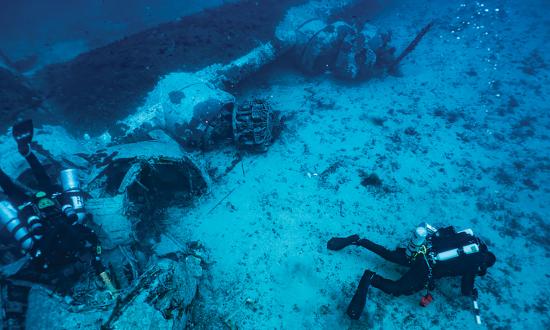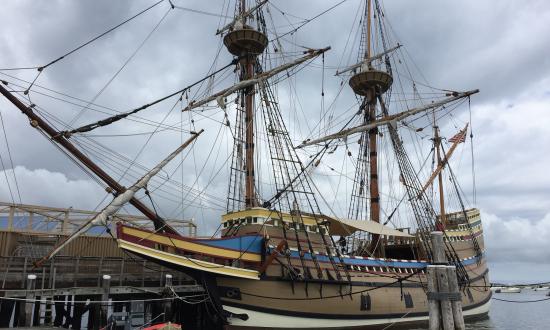Cartagena de Indias, Colombia, is a Caribbean city overflowing with history. Situated between a sheltered bay and the Caribbean, Cartagena was founded by the Spanish in 1533 but had been the site of an indigenous settlement called Kalamarí long before. To protect the city from attack, the Spanish Crown funded the construction of a massive fortification system, the largest in the New World. Thick walls completely enclosed Cartagena and were supported by a system of two dozen separate forts, fortlets, and independent batteries, as well as an underwater wall that protected access to the harbor. But the best single site to visit for a comprehensive understanding of the fortifications and the maritime history of Cartagena is the Museo Naval del Caribe, or the Caribbean Naval Museum.
The Museo Naval del Caribe is in a long, two-story building alongside a modern cut in the city walls. The museum is laid out in the slightly awkward format of a building that has been repeatedly renovated and expanded since it began as a small chapel in the early 17th century. Since then, it has been a Jesuit college, a military hospital, and a marine barracks before becoming the site of the Caribbean Naval Museum in 1992, on the 500th anniversary of Columbus’ voyage to the Americas. Quiet, well air-conditioned, and benefiting from colonial construction techniques that keep it quiet and cool, the museum is a welcome break from the hot and crowded streets of Cartagena, even for travelers with only a passing interest in the maritime history of the “Heroic City.”
The museum is split between the colonial maritime history of Cartagena and a history of the Colombian Navy. On the first floor, visitors are greeted by a replica of the stern of an 18th-century pirate vessel that nearly reaches the ceiling of the large hall. The exhibits begin with a display with the indigenous history of Cartagena and continue with displays on all the major attacks on the city.
The most interesting is the attempted capture of Cartagena in 1741 by a British force under Vice Admiral Sir Edward Vernon (See Book Reviews, Disaster on the Spanish Main, pp. 58–59). Students of U.S. history will remember that George Washington’s family estate was named Mount Vernon, after Sir Edward, because Washington’s brother served under him in Cartagena with several hundred troops from the American colonies. After capturing almost all the city’s outer fortifications, the British and American troops failed to storm Castillo San Felipe in a costly assault and left Cartagena; they also had been suffering from tropical disease and a lack of supplies. In the exhibition hall replicas, maps and dioramas dutifully reconstruct the battle so that it is easy to follow, even if visitors cannot read the Spanish language descriptions.
Upstairs, the museum continues with a history of the Colombian Navy. Visitors pass by a room-sized model of the tall ship ARC Gloria, Colombia’s white-and-green–hulled training ship, and into a room that charts the history of the navy from the war with Spain to the present. Particularly interesting is the large display on the Battle of Lake Maracaibo, where outnumbered Republican forces soundly defeated a Spanish fleet and secured independence for present-day Venezuela.
The museum also dedicates considerable space to the Colombian Navy’s contribution in the Korean War. The Colombian Navy sent the ARC Almirante Padilla—the former USS Groton, a Tacoma-class frigate—to support the U.N. mission in Korea. The upstairs has an interesting exhibit on the short war in the 1930s between Colombia and Peru and mock command rooms from a submarine, frigate, and a coast guard patrol boat geared toward younger visitors. The museum also has a small gift shop and café.
Unfortunately, the museum presents very little in English, and it does not have an active website apart from its Instagram page, @museonaval, which is mostly dedicated to special events. The historical portion of the museum, unfortunately, has few artifacts, though in some cases, recreations of things such as period costumes more than make up for this. The most interesting artifacts are the larger pieces laid out in the small courtyard, including an Armstrong gun used to bombard Cartagena in 1885 and the original bells that tolled marking the city’s independence from Spain in 1811.
The highlights of the museum are the dozen or so models of Spanish fortifications that protected the city, which the Lonely Planet guide commends as the “grand collection of reconstructed cityscapes and boat models.” The museum presents a more complete history of the fortification system than one would receive by visiting the forts in person, though the sense of scale can be lost in the models. While certainly not a world-class museum, the Museo Naval del Caribe is a must-see stop in Cartagena for anyone interested in the city’s naval or military history.
In addition to the museum, visitors interested in military history should also see some of the remaining fortifications up close. The city has nearly seven miles of preserved walls, much of which are open to walking and running. Castillo San Felipe, the fortification that broke Admiral Vernon’s attack in 1741, also is open to the public. The castle was built to take advantage of the contours of a local hill, giving it a unique structure. Reachable by boat, the twin forts that guard Bocachica—the entrance to the bay—also are well preserved and an excellent place to spend an afternoon.










